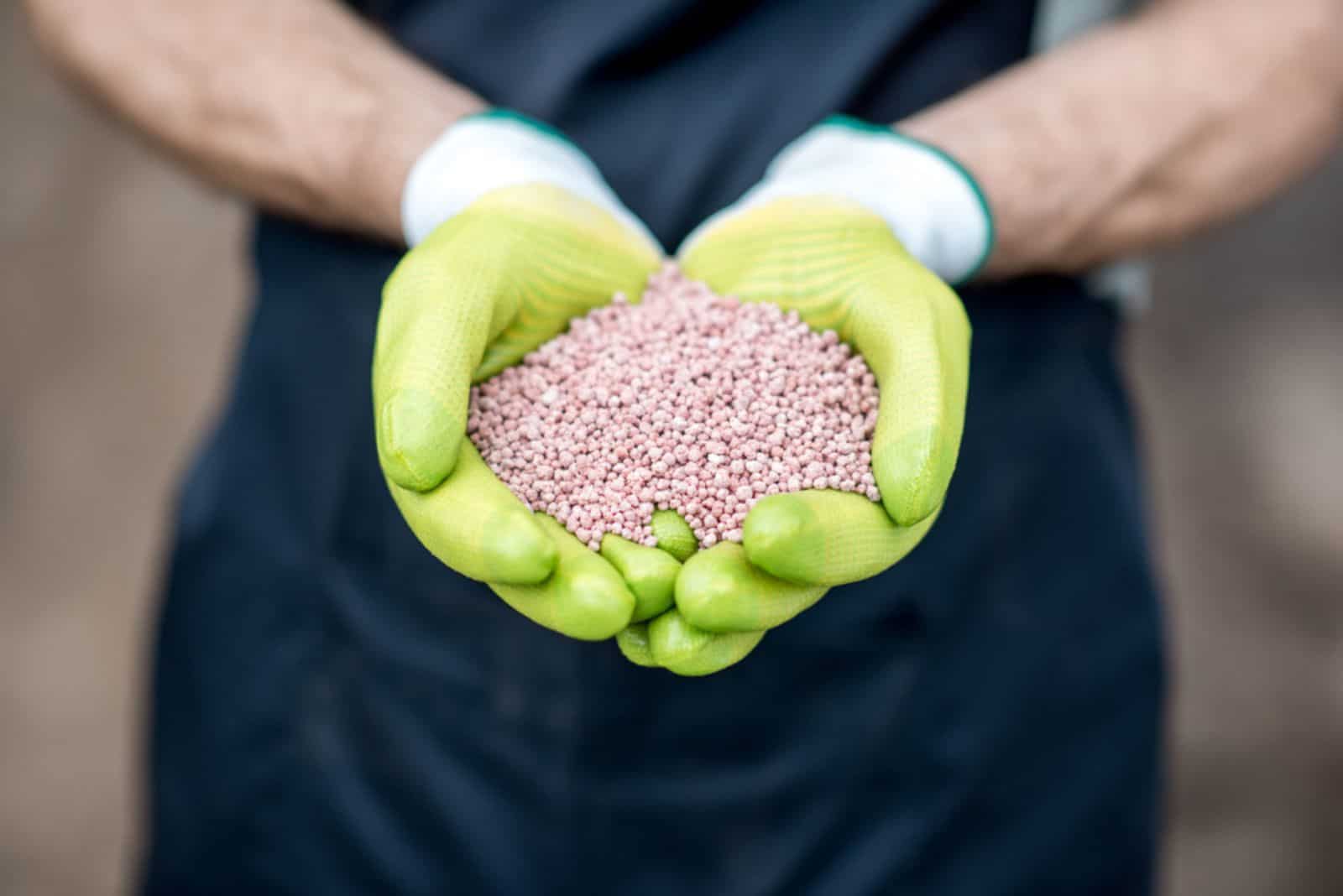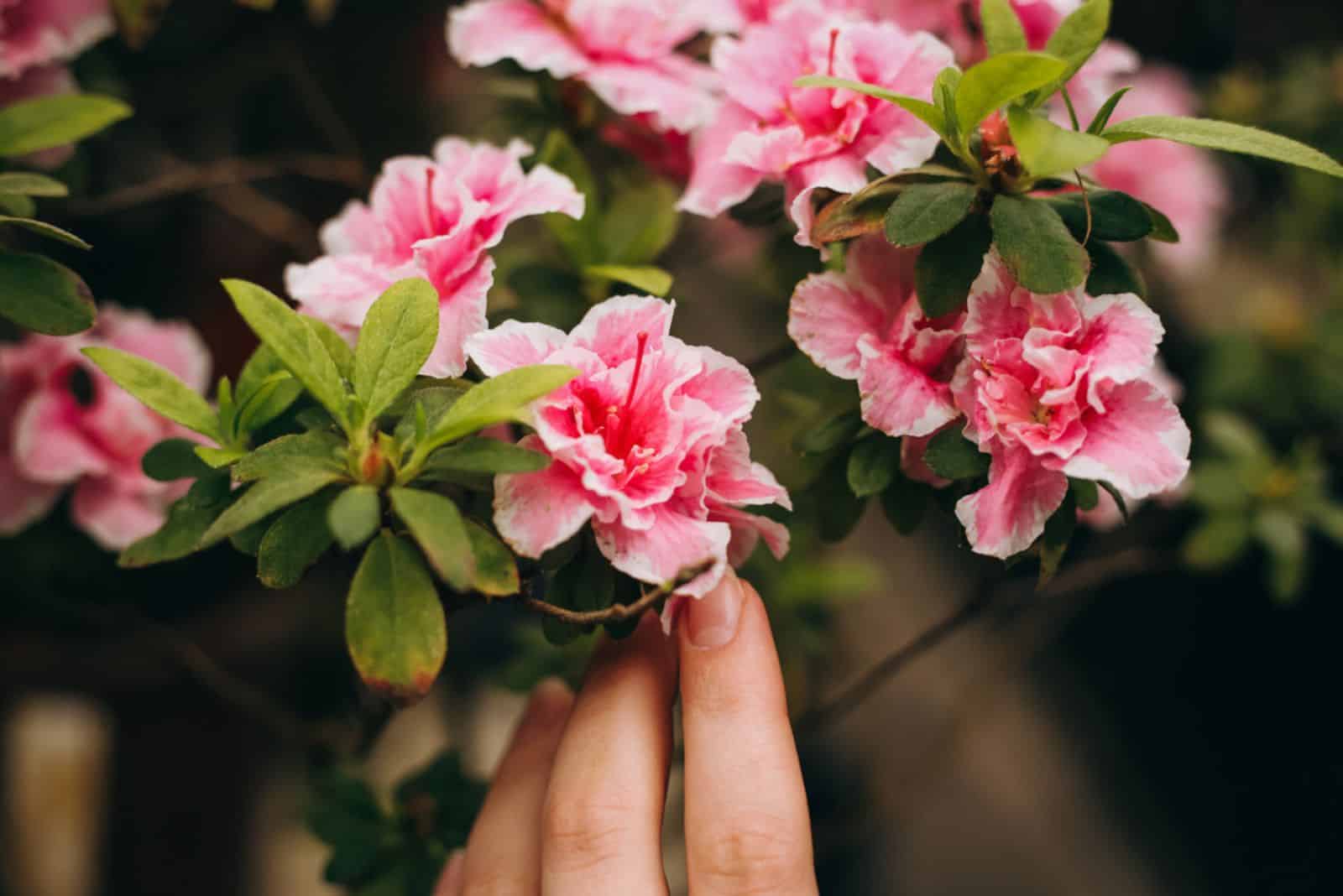We’re well into the azalea season and it’s only natural we want to do everything in our power to make them beautiful.
They’re not heavy feeders, but when you see them struggling, you shouldn’t disregard nutrient deficiencies as the cause.
Luckily, a generous layer of compost or some other organic fertilizer is all it takes for your acid-loving shrub to perk back up.
Let’s check some more tips!
When Should You Fertilize Azaleas?
A key thing when growing azalea japonica or any other variety is knowing when to feed them.
If you have established shrubs, fertilize them once you notice new growth appearing, which usually happens in spring or mid-summer.
Reblooming varieties such as Encore azaleas require fertilizer immediately after blooming so that they can produce another flush. This spring feeding may be all they need, although you might feed them again in the summertime.
Additionally, amend the growing medium with plenty of organic matter before planting azaleas. And once feeding time comes, apply products specially formulated for azaleas. You can use organic or inorganic fertilizers; it all comes down to your preference.
If you want to plant azaleas in fall, you should use organic products because you’ll see better results.
And if you want to reduce your fertilizing chores, you should mulch azaleas with organic materials, such as straw, leaves, compost, etc. They will decompose over time and enrich the soil with nutrients.
Signs Your Azaleas Need More Nutrients
But if you notice some signs of nutrient deficiency or you want your azaleas to shine, add some fertilizer.
For instance, yellow leaves may indicate nitrogen deficiency, so you should apply plant food rich in this nutrient.
Furthermore, you may notice chlorosis on azalea foliage, which is usually due to iron or manganese deficiencies. And the worst part is that this doesn’t usually happen because your soil lacks these nutrients, but because it isn’t acidic enough. (1)
Note: Azaleas absorb nutrients most efficiently when the soil is moist, so remember to water them after fertilization.
How To Feed Them
Feeding azaleas is fairly simple and all you’ve got to do is spread a handful of granular fertilizer at the base of the plant so that its shallow root system can absorb the nutrients.
Apply the granules below the shrubs drip line and water your azaleas thoroughly to activate the fertilizer.
The Best Fertilizer You Can Use
You can use both organic and inorganic fertilizers for azaleas, just make sure you’re using formulas aimed specifically at these flowers. They are on the list of acid-loving plants and need proper fertilizers to thrive.
Use fast or slow-release fertilizers based on how quickly you want to see results.
There isn’t a specific brand that’s best for azaleas as long as you choose a product suitable for acid-loving plants. Espoma, Miracle-Gro, and Jobe’s Organics are all suitable options.
Organic Fertilizers
Organic plant food is my go to method of adding more nutrients to my azaleas and other shrubs.
It is safe for the environment and there’s little chance you’ll overdo it and burn your shrub’s roots.
Use products formulated for azaleas, shrubs, and acid-loving plants. They usually have a well-balanced NPK, such as triple 4 or even 3-4-3.
Inorganic Fertilizers
If you don’t mind using inorganic fertilizers, you can use slow-release products formulated for azaleas, camelias, and rhododendrons. These are acid-loving plants and need specific pH to uptake nutrients.
Some evergreen tree and shrub fertilizers can work well for azaleas, just look for proper NPK percentages. 11-7-7, 10-5-4, and 10-6-8 are all suitable for azaleas.
However, using too much fertilizer for azaleas can reduce the activity of beneficial soil microbes that make the substrate fertile and cause your plants to become addicted to artificial plant food.
That’s why it’s best to just feed these plants once or twice during their growing season to give them a boost and avoid fertilizer addiction.
The Benefits Of Feeding Azaleas
One of the first things you’ll notice after feeding your azaleas is that they’re growing faster, producing healthy green foliage, and bear an abundance of pink flowers.
That’s because these fertilizers acidify the soil and create a perfect environment for azaleas to thrive. These plants need a pH between 4.5-6.0 and these products will make sure to keep your substrate somewhere in between.
One thing that can help these shrubs thrive is testing the soil before planting them. If it’s too alkaline, you can always add some acidifying agent to promote their healthy growth and colorful blossoms.
Additionally, the soil test will tell you exactly which nutrients your substrate lacks, so you’ll be able to focus on adding those specific minerals without overapplying them.
References:
1. Lerner, R. (2011). Interveinal Chlorosis on Azaleas and Rhododendron. Indiana Yard and Garden – Purdue Consumer Horticulture, A Purdue Extension Service for Home Gardeners.




